In 2010, fans had a once in a lifetime chance to be part of the story as Doctor Who Live! The Monsters are Coming invaded cities across the UK.
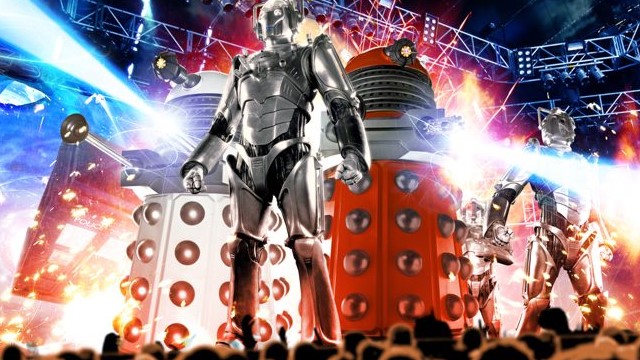
In its almost sixty years since it first flickered into sight on television screens, Doctor Who has gone to one conquer almost every medium you could care to name. Practically since the beginning, the series has been complemented by books, comics, motion pictures and even pop music singles.
But one of the most enduring associations is with the stage. Appropriately for Doctor Who, these stage shows represent a paradox – both an ongoing part of the fabric of the Whoniverse, and totally fleeting. If you miss them during their run, they’re gone forever.
Possibly the stage show to have vanished most completely, though, is 2010’s Doctor Who Live! While other outings by the Doctor and company to the theatre have been adapted for audio, and thoroughly documented, this production – subtitled ‘The Monsters are Coming!’ – is largely forgotten today.
So Doctor Who Live! is long overdue a guide to just what it was, and how it thrilled audiences around the UK for four weeks in the winter of 2010.
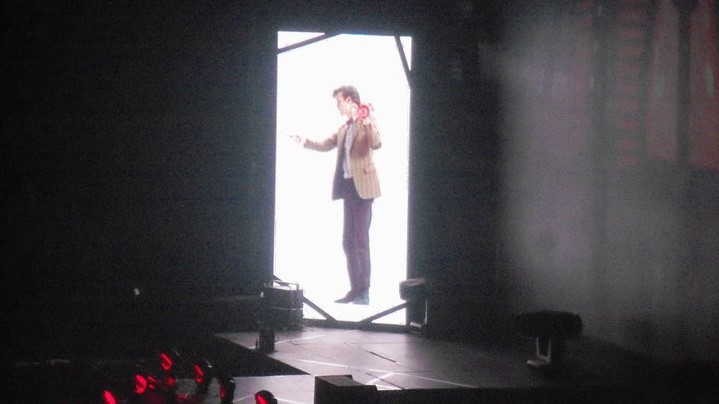
Following the success of the Doctor Who Proms, Doctor Who Live! brought Murrary Gold’s epic scores on tour
The idea for Doctor Who Live! grew out of the success of the Doctor Who Proms at the Royal Albert Hall. At that point, the Proms had been held twice, in 2008 and 2010. It had been incredibly well received, playing to sold out houses, and left fans young and old feeling thrilled. The music of Murray Gold had been played by a full orchestra, while monsters from the show stomped through the audience. The temptation to bring the show on tour was natural, but impractical. So plans were drawn up for how it could be done on a more modest scale.
Murray Gold created new arrangements of his music suitable for a scaled back band, while Ben Foster, who conducted the music both for the Proms and the TV show, would travel with the tour as conductor. The use of costumes from Doctor Who was also cleared, or in some cases new replicas made, to recreate the opportunity to see up close the enemies that had been such a key part of the Proms’ success.
But the Proms had also featured actors from the show, like Matt Smith and Catherine Tate, who introduced the music. There was even a number of brief minisodes for the Doctor.
In their place, to help tie the strands of the evening together, a new framing story for Doctor Who Live! was conceived. A show within a show, ‘Carnival of Monsters’ was a loose sequel to 1973’s television story of the same name. Nigel Planer (The Young Ones) played Vorgenson, son of that story’s travelling showman Vorg, now travelling the galaxy with his own minimiser to bring audiences face to face with Silurians, Cybermen, Judoon and more.
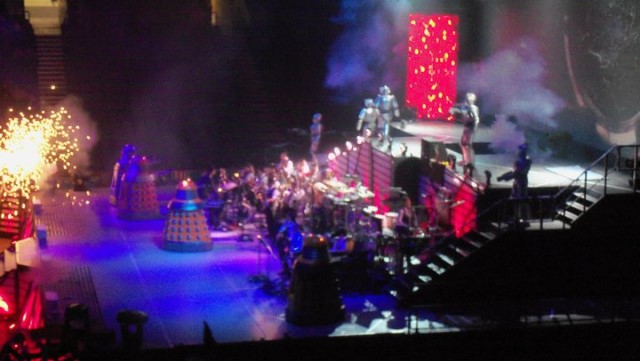
Doctor Who Live! used skillful stage craft to achieve TARDIS materialisations and Weeping Angel attacks live on stage
Much more complex than just a master of ceremonies, Vorgenson shows not just the bombast of a showman, but a tightly wound anxiety as things progressively go wrong with his show, and finally a sly maliciousness as his true motives become clear. Vorgenson blames the Doctor for the destruction of his father’s machine and the collapse of his business, meaning that the entire audience are now hostages in a trap designed to draw the Time Lord in…
Matt Smith’s era as the Doctor had only just begun, with Doctor Who Live’s tour taking place between the broadcast of ‘The Big Bang’ and ‘A Christmas Carol.’ With filming of Series Six coinciding with the tour he didn’t appear on stage, but appeared via pre-filmed scenes on the screen.
But in one the show’s big innovations, he also made a virtual appearance once taken prisoner by Vorgenson.
The Doctor’s force field cage was created with a box where each wall was a oversized LCD screen, with the pre-recorded footage of the Doctor filmed and displayed from all sides to create the illusion of Smith really being on stage. The same trick allowed for the goosebump-raising climax as the TARDIS appeared to materialise in front of the audience’s eyes to rescue the Doctor.
The TARDIS materialisation was one of the results of the team’s collaboration with stage illusionists The Twins. The Twins’ skill and experience also allowed Doctor Who Live! to mount breath-taking sequences where Weeping Angels invaded the stage, with bursts of blinding light forcing the crowds to blink while the actors playing the Angels moved unseen and their victims dropped through trap doors to vanish into history.
Meanwhile, when it’s finally revealed that Vorgenson himself is just a pawn in the Daleks’ master plan, a cleverly concealed crane also allowed the Dalek Supreme to fly above the stage as it barked orders for humanity’s extermination.
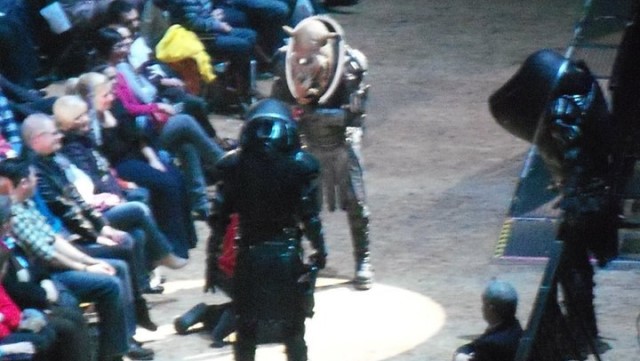
The audience were brought into the action with cast planted in the crowd to be dragged away for Cyber-conversion, while real fans were interrogated by the Judoon
The structure of the show expertly brings the audience into the experience. The Weeping Angels’ prey take the form of policemen who wind their way through the crowds, responding to reports of strange goings-on. Cybermen descend into the crowds from the stage and drag a planted audience member into their machine to emerge, seconds later, converted into a Cyberman himself. The result is a show that’s more than just a framework for the music but a full blooded Doctor Who adventure in its own right.
But that music is absolutely the heart of Doctor Who Live! The fifteen piece band accompany each monster’s appearance with slightly more guitar heavy versions of the appropriate music, whether from ‘The Vampires of Venice,’ ‘Blink,’ or ‘Human Nature.’ ‘Amy’s Theme’ gets an airing in full, as does the heart-pumping brilliance of ‘I Am the Doctor.’ And naturally, the whole show ends with the Doctor Who theme, here in an energetic, strident version designed to get the audience on their feet one last time.
The unique mix of music and thrills of Doctor Who Live! has never been repeated. It was succeeded the following year by ‘The Crash of the Elysium,’ a stage show for children that ran for two weeks in Manchester the following year (and which went one better than ‘The Monsters are Coming’ by featuring Matt Smith on stage as the Doctor for one night only.)
And today, Immersive Everywhere brings the audience even deeper into the action with ‘Time Fracture,’ as the audience roams through multiple environments, encountering many characters and creatures from the show’s history, and even visit a bar with a singing Silurian in residence.
But particularly for younger fans who saw Doctor Who: Live! for the first time as children, Vorgenson’s ‘Carnival of Monsters’ and those autumn nights in 2010 they ventured out to come face to face with a galaxy of terrors will forever be special.
Did you see Doctor Who Live! in 2010? And which is your favourite Doctor Who stage show experience? Let me know in the comments below.
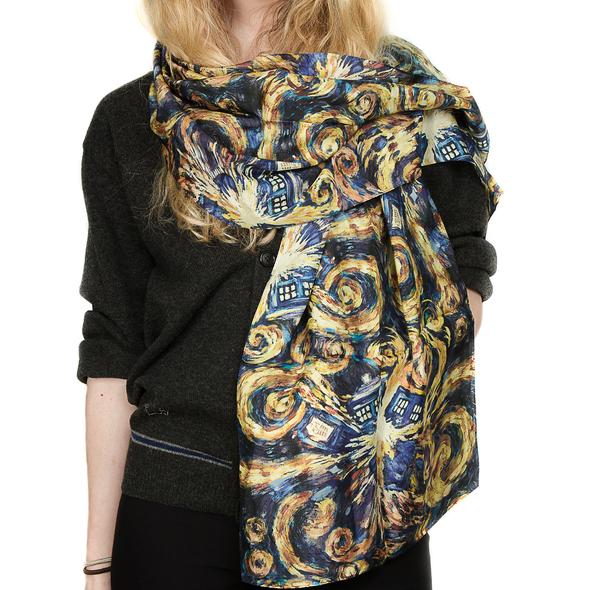
Doctor Who Pandorica Scarf – order now from the Lovarzi shop!








Leave a Reply